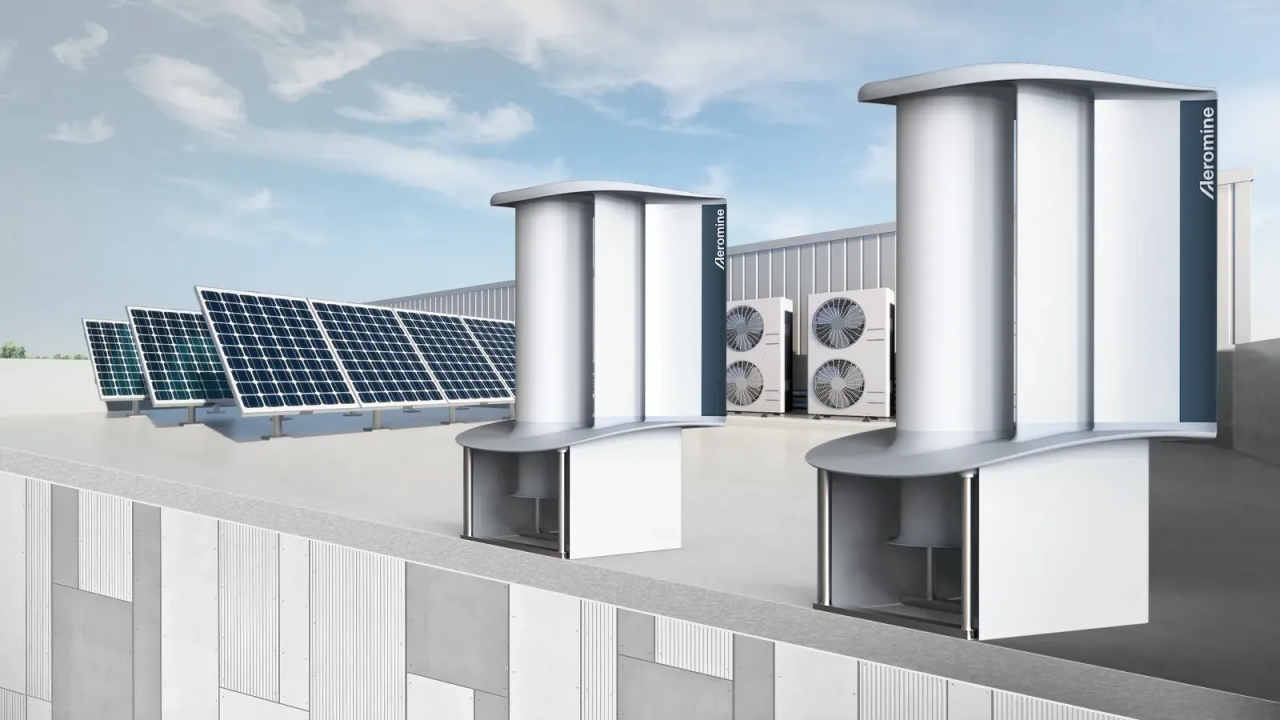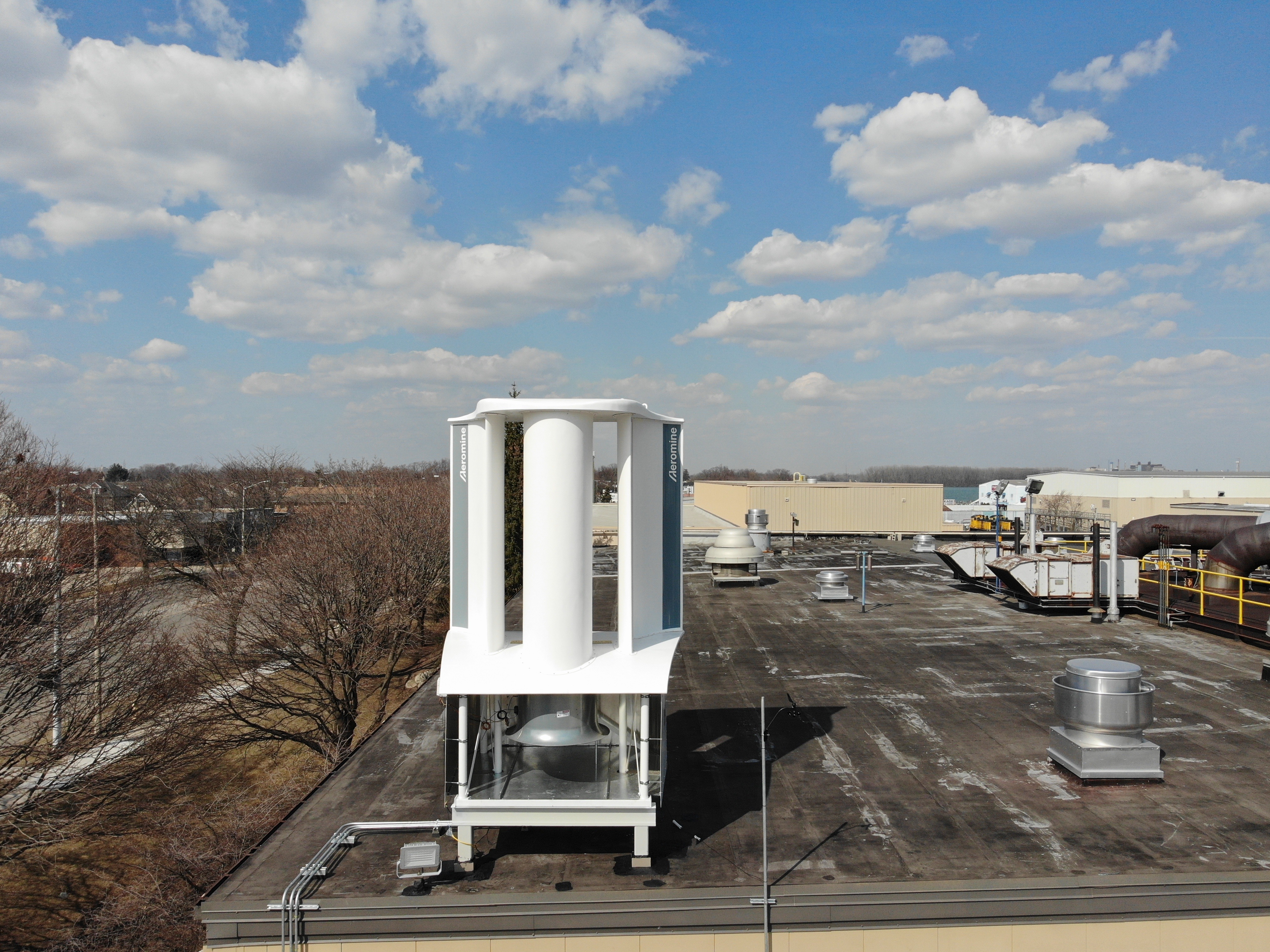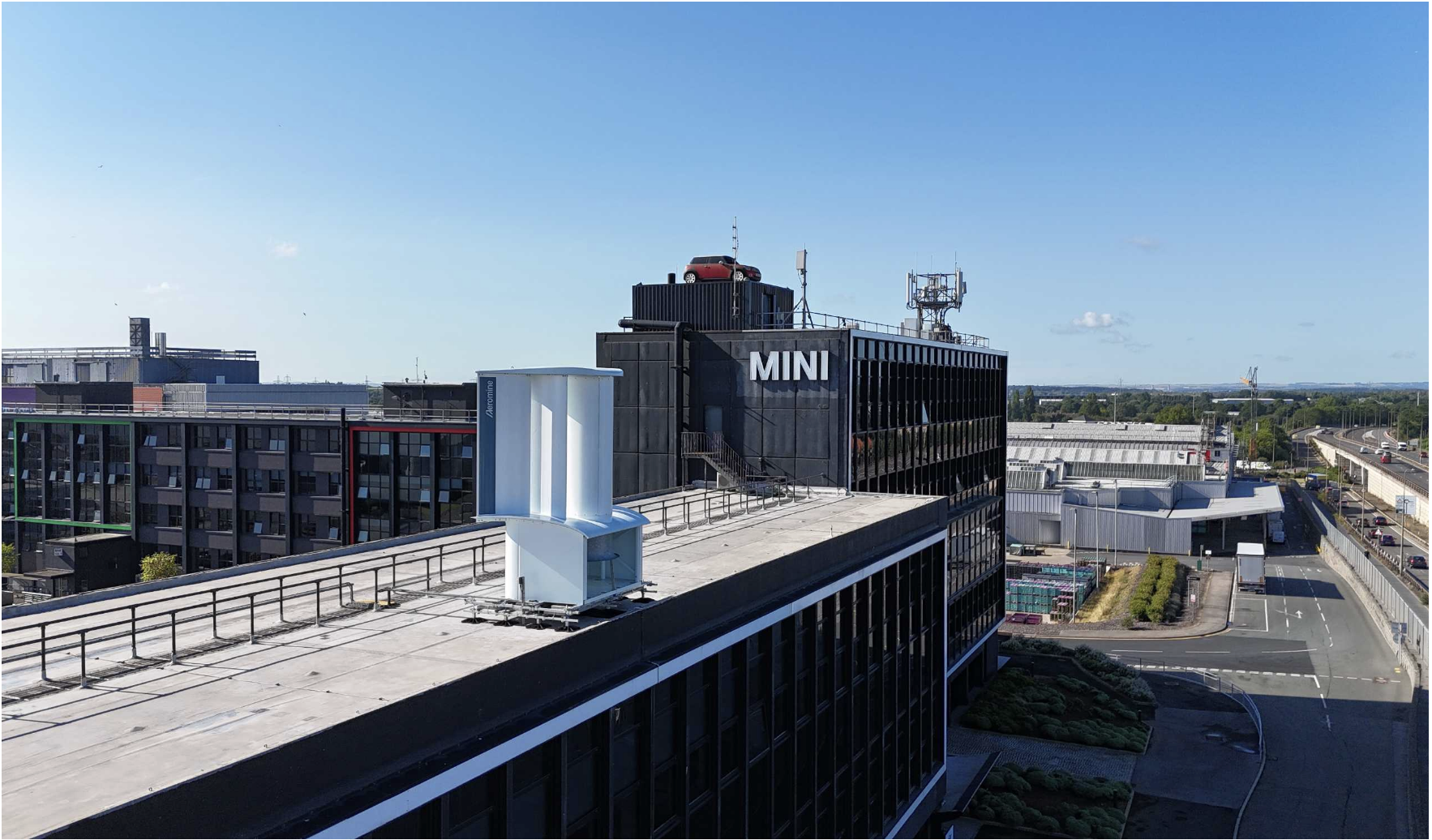Created: Nov 21, 2022 06:27 AM EST
Aeromine Technologies has developed a ground-breaking bladeless wind energy solution that can be linked with existing solar energy systems and building electrical systems, allowing commercial property owners to meet the growing demand for on-site renewable energy.
Aeromine stands out with its particularly considerate of the environment. It doesn't make any sound, hurt or kill birds with its "motionless turbines." The system captures and amplifies the wind from each building using aerodynamics akin to racing car airfoils.
We asked Dr. Carsten Westergaard, founder and the CTO of Aeromine, what we were wondering about the turbines. Here are the answers.
IE: How did your team first come up with this idea?
Dr. Carsten Westergaard: "We invented Aeromine during his tenure as a Professor of Practice based on his lifelong work with utility-scale wind turbines. The original patent was developed at Texas Tech University. Additional, information about the inspiration can be found in the patent text."
"A deeper understanding of Aeromine’s fundamental principles was developed in the following years in a partnership between Westergaard, Texas Tech, and Sandia National Laboratories in New Mexico, performing wind tunnel tests, computer models as well as field tests. Most of this work was with model generation 2, following generation number 1, which was very poorly performing. Numerous scientific publications describe this work. The present version of Aeromine is generation 7, which has been conceptually optimized for manufacturing as well as building integration."
IE: Can you explain to me, step by step, how exactly these generate electricity? They look a bit like the Dyson bladeless fans. Is it a similar concept?
"Unlike any type of wind turbine, Aeromine has two separate flow streams. This is maybe the only similarity with a Dyson-style fan because the physics is very different. The external airfoils facing the wind produce a low-pressure potential. The low-pressure potential drives an internal flow stream from a separate inlet through an internal propeller that extracts energy and then ejects the residual fluid into the free stream."
"Increasing or decreasing the internal flow rate only affects the external flow stream in a marginal way. In some Aeromine designs, the ejection of the internal flow stream can result in positive stimulation of the external flow and increase the performance. This is the opposite of an ordinary wind turbine or a diffusor argument wind turbine. The internal propeller is not really a wind turbine, it is a fan operating in reverse, or in the abstract of water flows, it is a Kaplan turbine in a hydro dam, driven by the differential pressure and the flow rate originating in the differential pressure."
IE: Is there anything similar to this on the market?
"Aeromine harvests wind energy based on physical principles that vary from that of an ordinary-style wind turbine (vertical or horizontal). There have historically been many interesting ideas, but not based on the principles of Aeromine, which thrives because of the physics and the power of high-performance airfoils."
IE: You say they're silent. Do they make any noise at all, even if you stand next to them?
"We have extensive experience in big wind and aero-acoustic noise generation. But just as with the performance, many small and larger details are completely different. The most obvious is that the propeller is inside a duct and not in the direct line of observation (hearing). These design features add up to a low-noise design concept. That said, more importantly, when you stand on the roof and lean your ear against the unit, you cannot hear anything nor feel any vibration. Both of these characteristics are extremely important to operate in the building environment."
IE: How many of them do you plan to make? When will the first ones hit roofs? Who are you working with?
"Our first pilot program was deployed in partnership with BASF in Wyandotte, MI, by the Detroit River, and there are several others underway. BASF has been a tremendous partner in providing active support in installing and operating Aeromine, which is currently in negotiations with manufacturers to produce tens of thousands of units by the end of 2023."
IE: You say these have a longer life cycle. How long exactly?
"Unlike ordinary wind turbines, the structure does not move and is more like a piece of the building than a wind turbine. We have used building-style design engineering in our design of the unit mixed with our team’s expansive knowledge of big wind design standards. By the end of the day, buildings stand a pretty long time, and so will Aeromine. For all practical purposes, there is no lifespan limitation. The mechanical moving parts are inside a duct protected from wind and weather, and they are loaded lightly compared to other rooftop equipment, such as ventilation fans, so they will last much longer."
IE: What speed of wind do they work up to?
"Aeromine begins operating around 2.5 m/s (5.5 mph), which is impressive. The cut-out is 25 m/s (55 mph). The unit is designed for 53 m/s extreme wind (120 mph)."
IE: What is your vision for the future? Do you plan to get these everywhere? Why is this essential to the future?
"Aeromine can, in principle, be made in any size. In fact, we made functional prototypes as small as a few inches high. The upper limit comes down to practicalities and cost. We envision that we will tailor Aeromine to other markets using other materials, other design variants, and other operating principles."
Source: https://interestingengineering.com/innovation/aeromine-wind-turbine-without-blade


